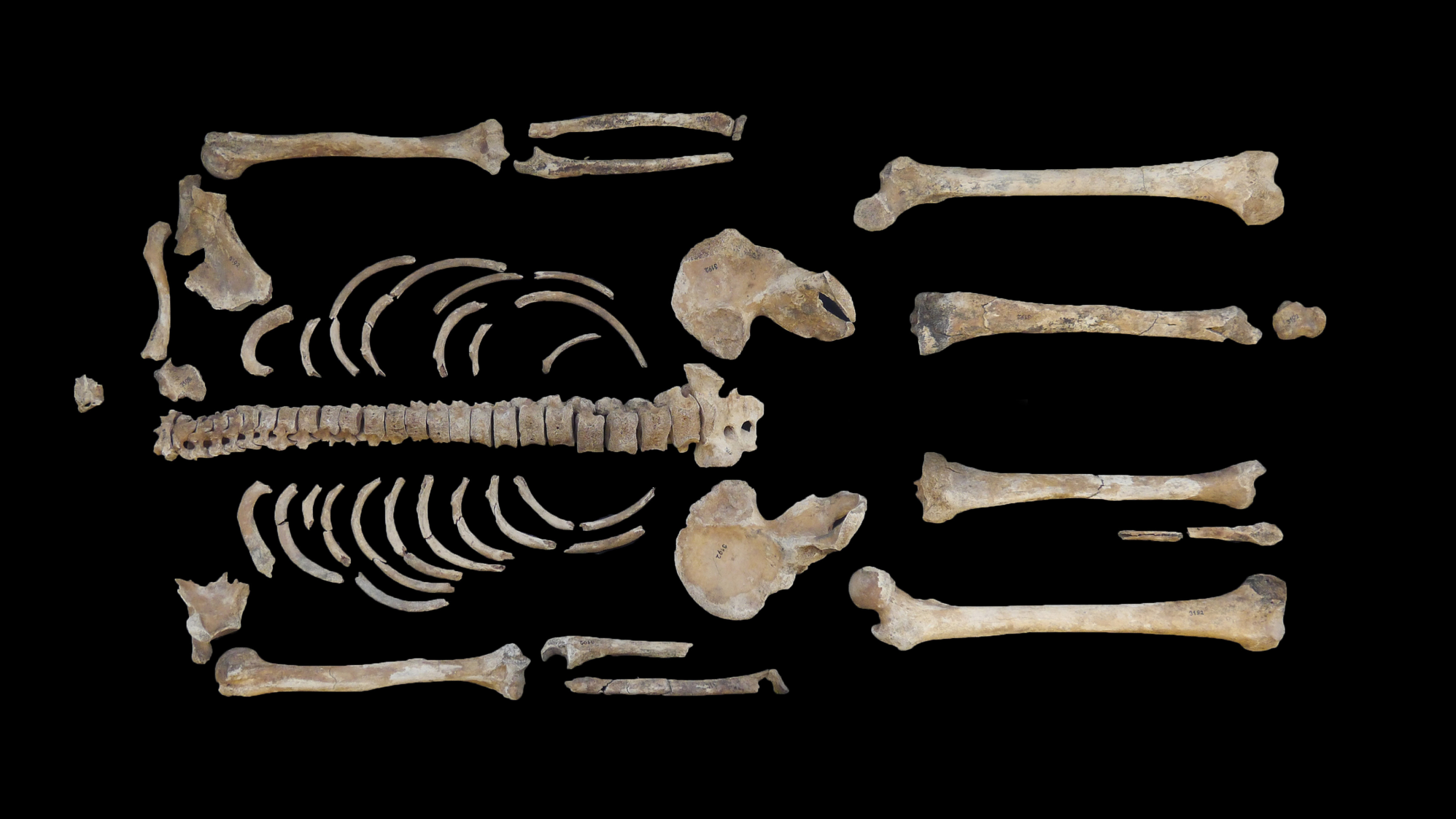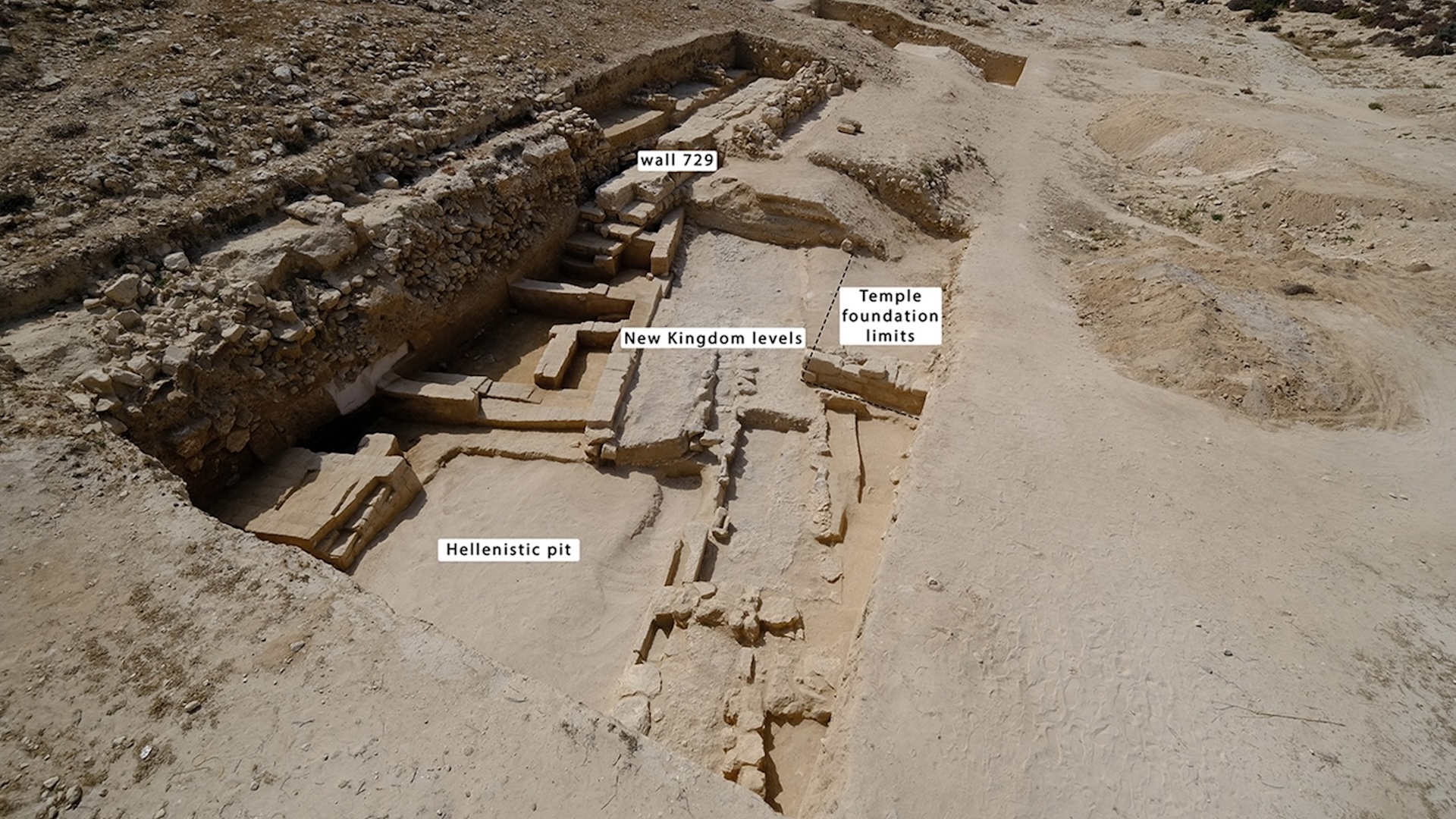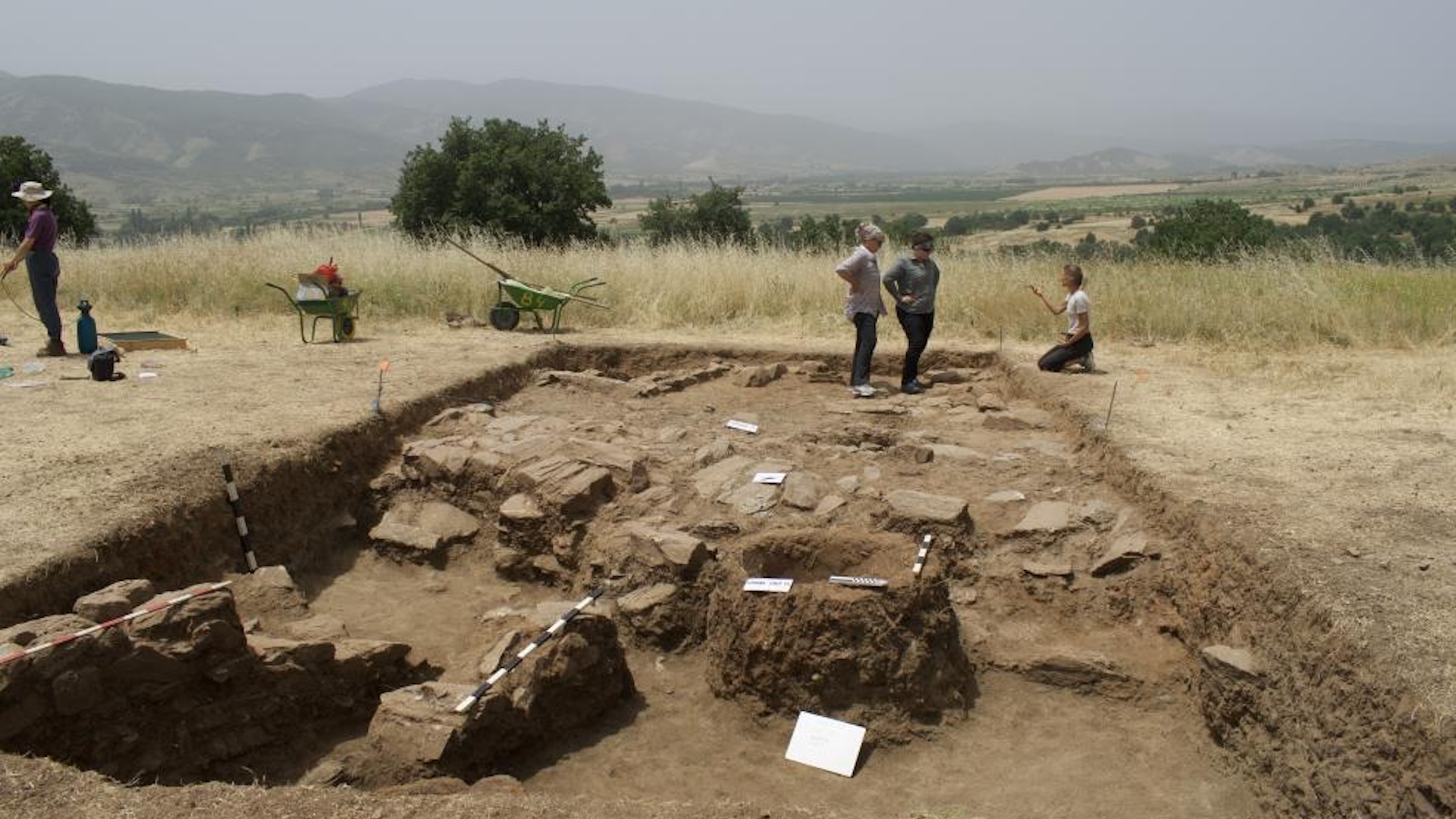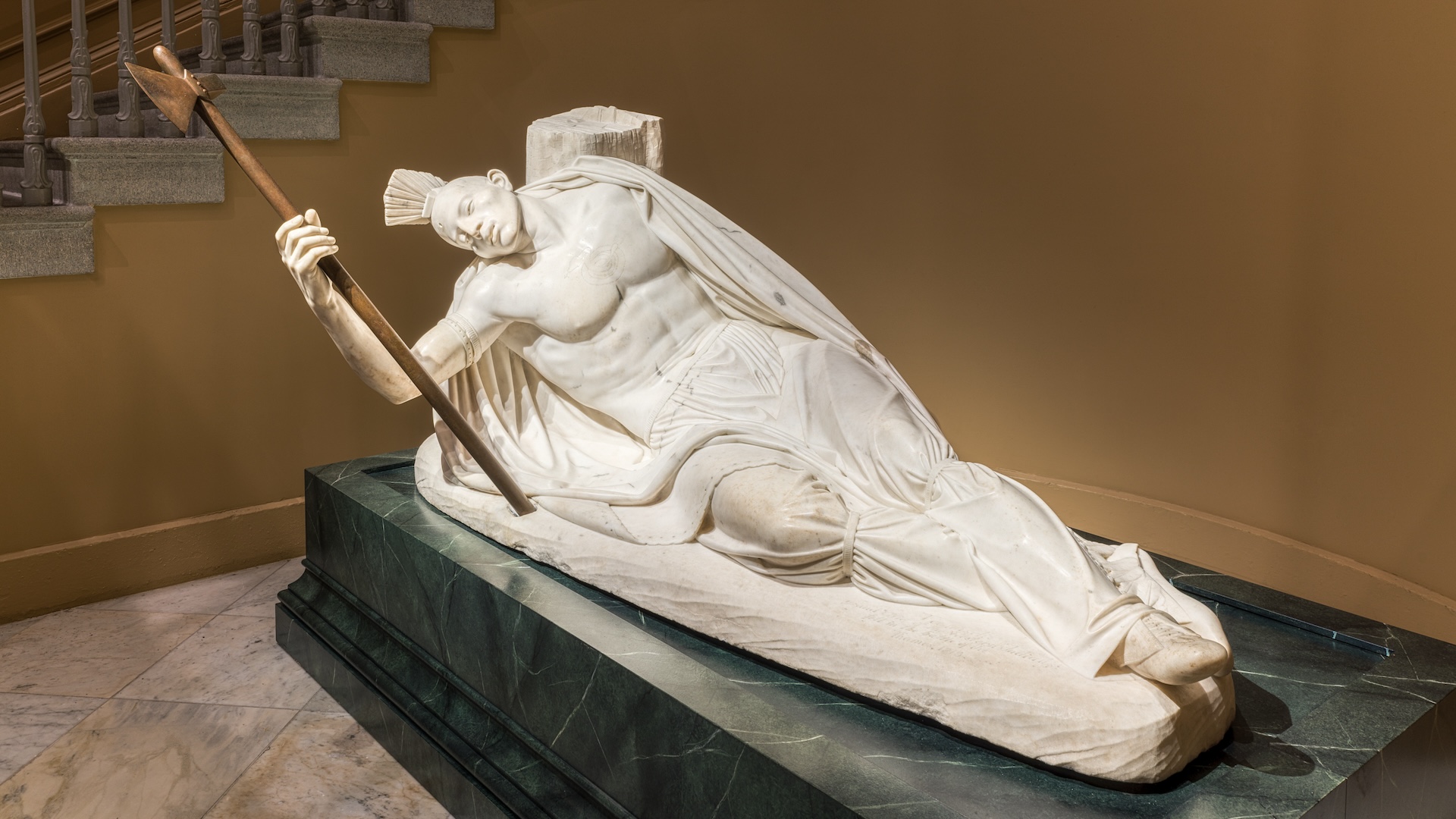Shattered 1,800-year-old sword was 'ritually sacrificed' and may be from Vandal warrior's grave
A metal sword broken into three pieces may be evidence of a Germanic warrior's burial from the Roman Empire.
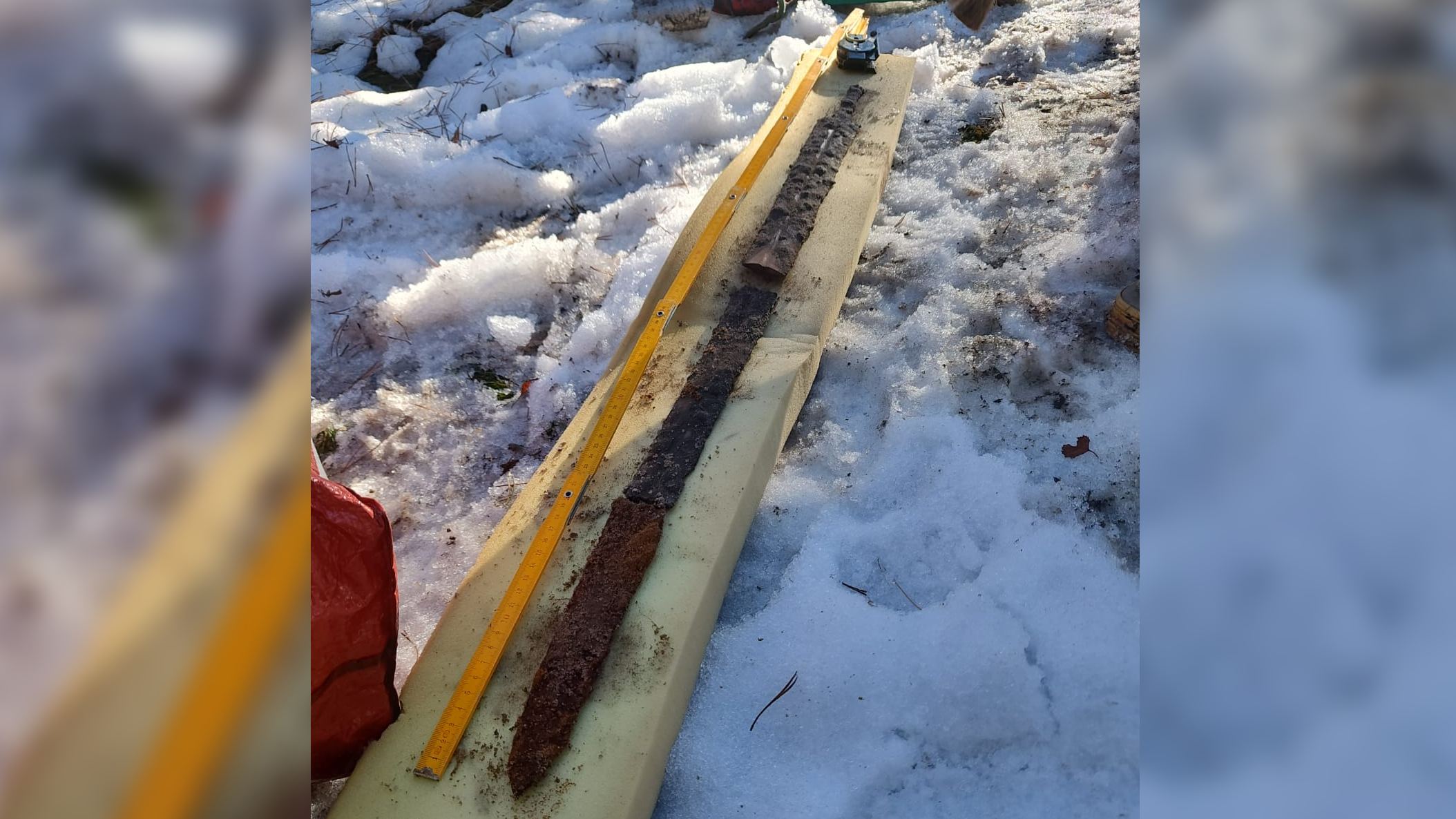
Metal detectorists searching for World War II artifacts in a forest in Poland stumbled upon something far older: a nearly 2,000-year-old sword purposefully broken into three pieces. The weapon may have been a funeral offering for a fallen member of the Vandals, a Germanic tribe renowned for sacking Rome in the fifth century.
In January, two detectorists with the Inventum Association history club discovered the sword in the Jura, a hilly and forested region of southern Poland. A preliminary analysis by experts at the nearby Częstochowa Museum suggests the weapon was a double-edged spatha, a broadsword most commonly used by Germanic horse-mounted warriors during the time of the Roman Empire. From the third century B.C. to the fifth century A.D., Poland was inhabited by people of the Przeworsk culture, which included the Vandals.
"The sword was owned by an influential person from the Vandal tribes," Mariusz Włudarz, president of the Inventum Association, told Live Science in a translated email. "The sword was broken into three pieces during the funeral ceremony of the warrior and placed on a cremation pyre."
Related: Ritually bent Bronze Age sword unearthed in Danish bog is 'very rare find'
Deliberately damaged weapons — including bent or broken swords, notched blades and flattened shields — are often found in Przeworsk graves. This practice may have originated with the Celts and is sometimes called ritual killing or sacrificing of weapons.
"Currently, research on this sword is underway and is being conducted in the Częstochowa Museum," Włudarz said. Inventum Association detectorists hope to help by further searching the find spot, whose specific location is being kept secret while analysis is ongoing.
"After initial research, the sword will undergo conservation and will probably be exhibited in the Mokra Museum," Włudarz said.
Sign up for the Live Science daily newsletter now
Get the world’s most fascinating discoveries delivered straight to your inbox.
Roman emperor quiz: Test your knowledge on the rulers of the ancient empire

Kristina Killgrove is a staff writer at Live Science with a focus on archaeology and paleoanthropology news. Her articles have also appeared in venues such as Forbes, Smithsonian, and Mental Floss. Killgrove holds postgraduate degrees in anthropology and classical archaeology and was formerly a university professor and researcher. She has received awards from the Society for American Archaeology and the American Anthropological Association for her science writing.
You must confirm your public display name before commenting
Please logout and then login again, you will then be prompted to enter your display name.

